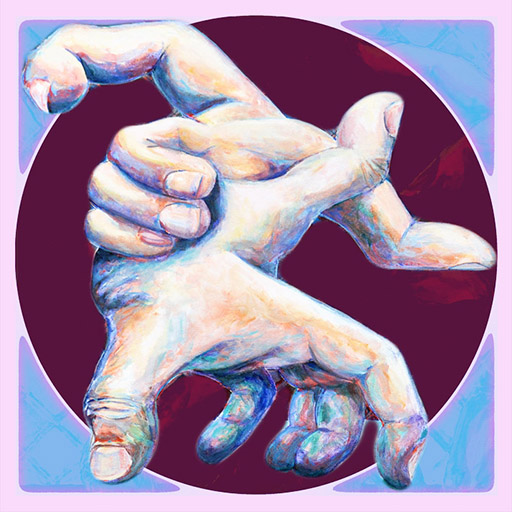
analogue and digital figurative art full of imagination

analogue and digital figurative art full of imagination
Conscience requires knowing especially that we tend to forget.

acrylic paint on watercolor paper (1.5 x 4.5 m, 2015)
collective conscience
We have a common consciousness and a common conscience, we are all responsible, as a group but also as individuals.
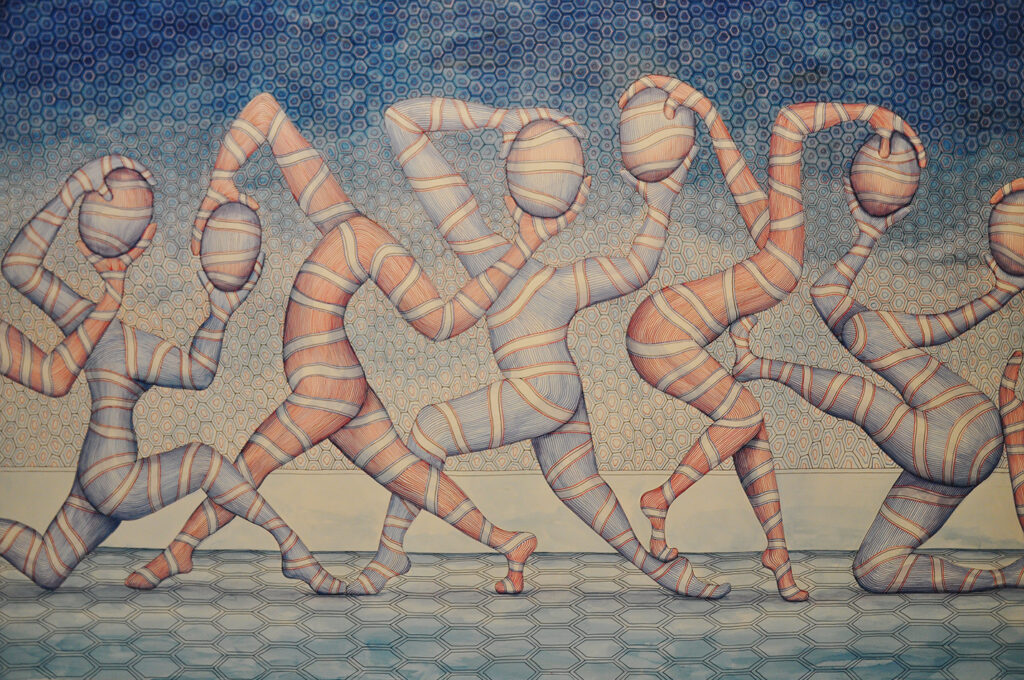
If the heads are the conscience, then a collective shared conscience is presented here as a sharing of individual conscience, but this drawing can also be seen as a representation of the group process in which the individual has to get his/her ideas accepted without handing over the expressing of the own identity. Think of expressions like “many heads are better than one” or “my head was spinning”?
Even before the dawn of the 20th century, a hundred years before the dawn of the computer age, many were concerned about the increasing complexity of the world. Since then, population growth and industrialization have led to more and more production and communication and unavoidable specialization. The individual is becoming more and more individual and society demands that the individual restricts himself to playing a small specialized role with the effect that the individual has lost sight of the common interest in favor of self-interest.
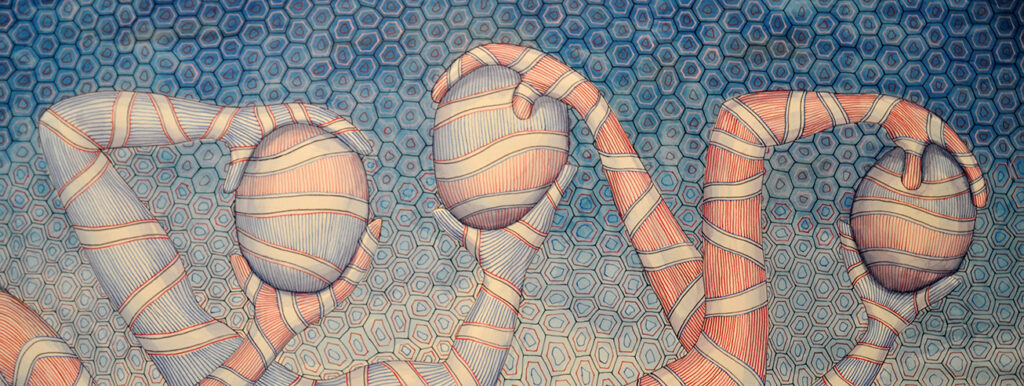
From the conscience of each individual a collective conscience must be composed. The sharing of moral consciousness has, of course, always been there as long as people live in groups alongside and with other groups. Due to the increased complexity of society and the major problems that need to be solved, conscience must be redefined. The individual conscience should not be eliminated and completely replaced by the collective, for example the discussion about self-enrichment and top salaries, tax avoidance and distribution of wealth. At the same time, however, the individual conscience should not consider itself superior to the collective but care for the collective conscience, for example discussions about the approach to viruses, discrimination, refugees and climate problems.
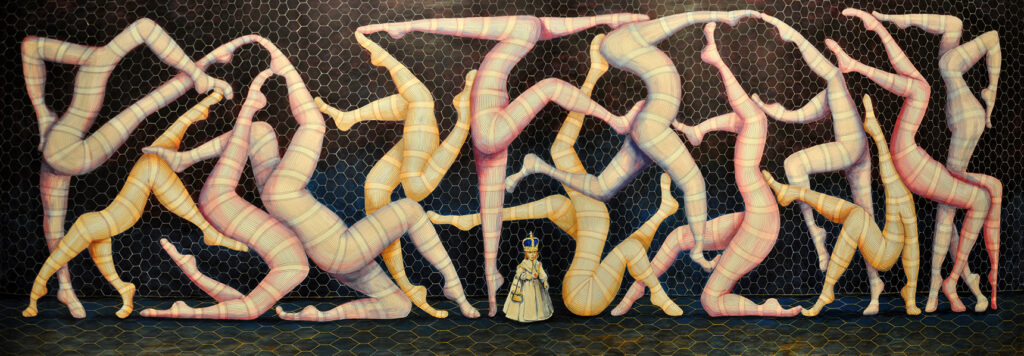
acrylic paint on watercolor paper (1.5 x 4.5 m, 2015)
possibility and reality
In addition to the collective responsibility for the entire world, which we all have to bear, it is essential for everyone and certainly for the artist to forget reality every now and then and to focus on the possibilities, of course while taking into account one’s own responsibility.
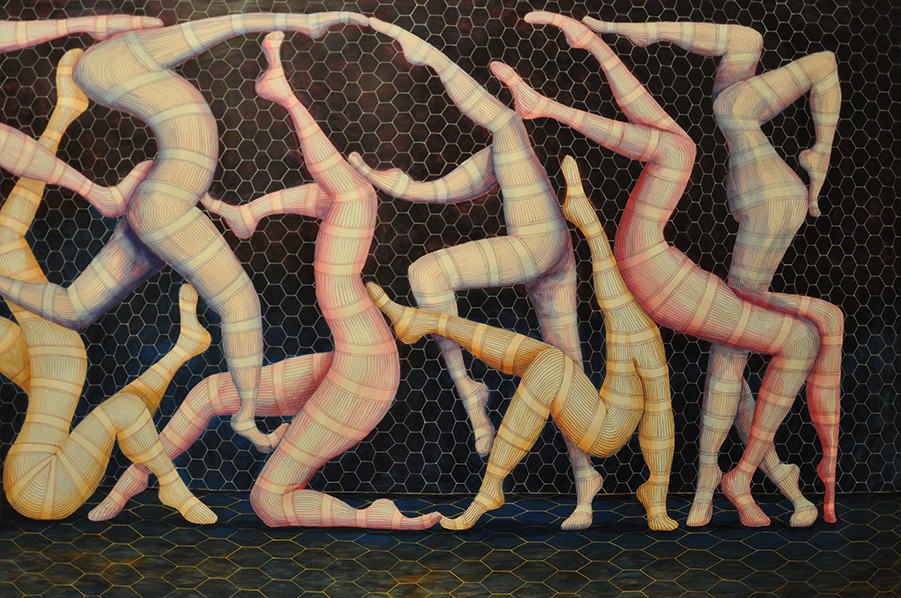
On the one hand there is the ordinary everyday reality, the solid bourgeois world, on the other there are the possibilities, there is the fantasy, the adventure of art. Geschäft or Seele. Everyday prose or divine poetry, salaried employment or art.
Reality or possibility, present or future. Why should reality be more important than possibility. Nobody longs for reality. Nobody dreams of the here and now. Everyone dreams of a future, preferably unachievable reality, of a paradise.
The possibilities are therefore more important than reality. We take reality for granted and long for something different. Human figures without heads and sometimes without hands but with extra feet, do not represent reality but are beings from the realm of possibilities.
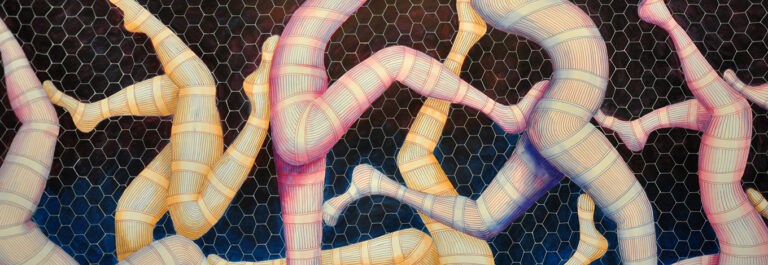
Here we see a nation of anonymous figures who together surround a dressed-up princess. Have the dead come out? This is what the history of the individual in the group looks like. Very few individuals keep a face, ideas live on, as does the species, but the individual is temporary. Within a few generations most of the people have been completely forgotten and become anonymous, only a single icon remains. Usually the images of the guilty remain from history, Nero, Napoleon, Stalin, Hitler etc… in this case only the innocent girl.
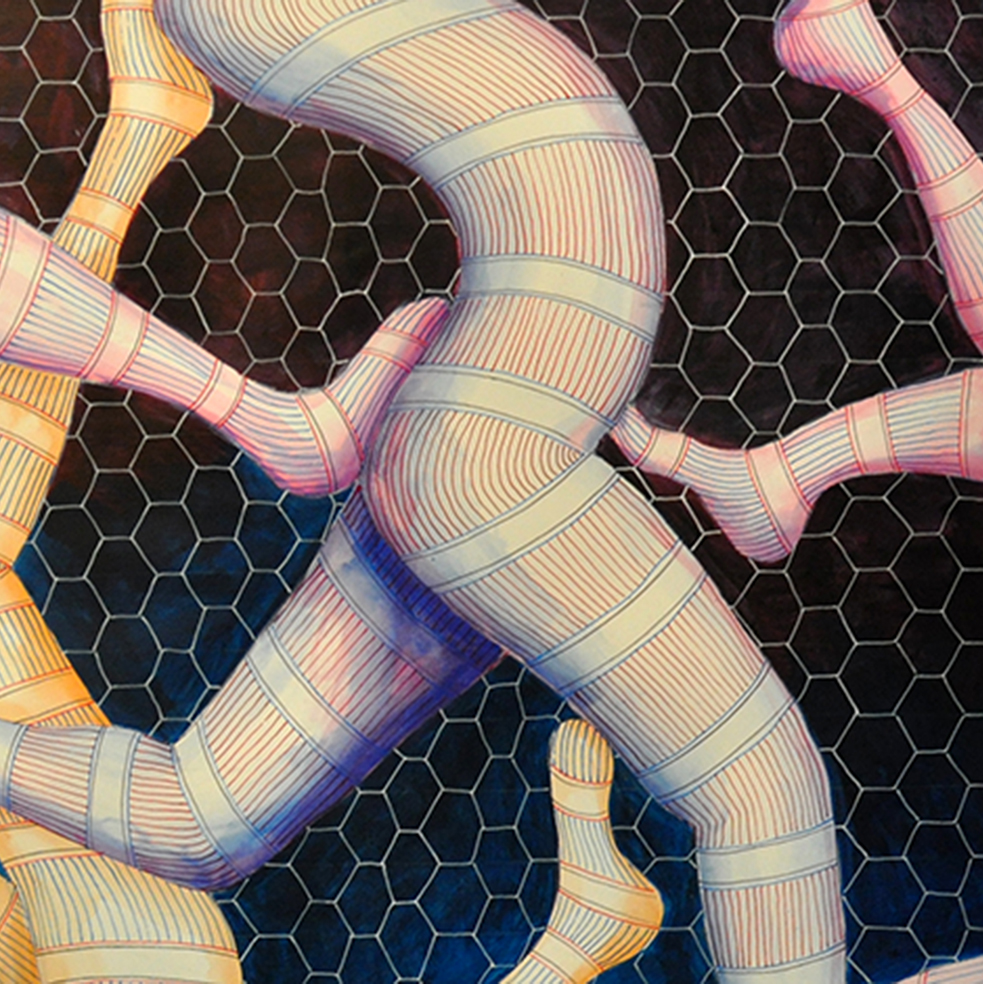

acrylic paint on watercolor paper (1.5 x 4.5 m, 2015)
imagination and reality
A combination of large and small figures, perhaps parents and children, and a pile of heads reminiscent of a nest of eggs? Heads containing the conscience are like Easter eggs, fragile, beautifully wrapped but hollow inside, hidden and hard to find.
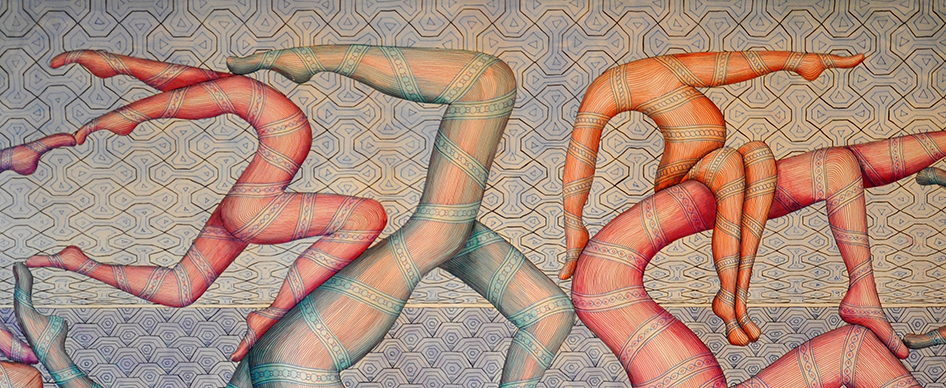
War and disaster often call for gloomy colors and fierce contrasts. In this case the colors are cheerful, the atmosphere is not dramatic, but that is the insidious image of the refugees on the borders of Europe. They often don’t look like people scarred by war and violence. But they have lost their heads, their freedom has been taken from them and they are now dependent on the goodwill of strangers. The pile of heads can be seen as the squandered freedom of action, a pile of despair, which on the outside looks like a colorful market in a sunny country.
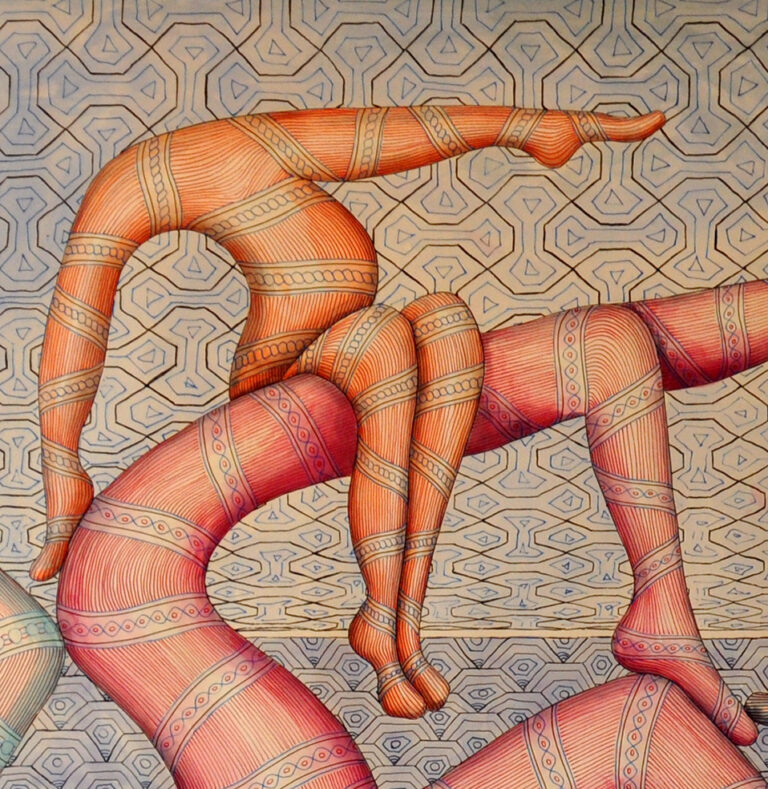
A painting is both, reality and possibility. Reality is paper, paint, color, light dark, composition, technique, etc. The image is a possibility, of which there are infinitely many conceivable, which once again shows how limited reality is.
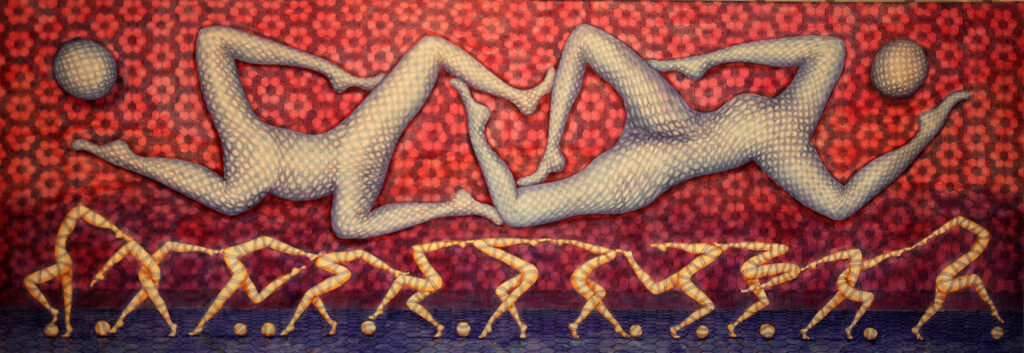
acrylic paint on watercolor paper (1.5 x 4.5 m, 2015)
image of reality
The floating figures are the warring superpowers and the small ones below are the impotent victims of global political structures. Dark clouds of war with a helpless people below. The dark powers fight without a clue, without a head, the people run to and fro looking for support and they have lost their freedom, their heads bounce on the ground.
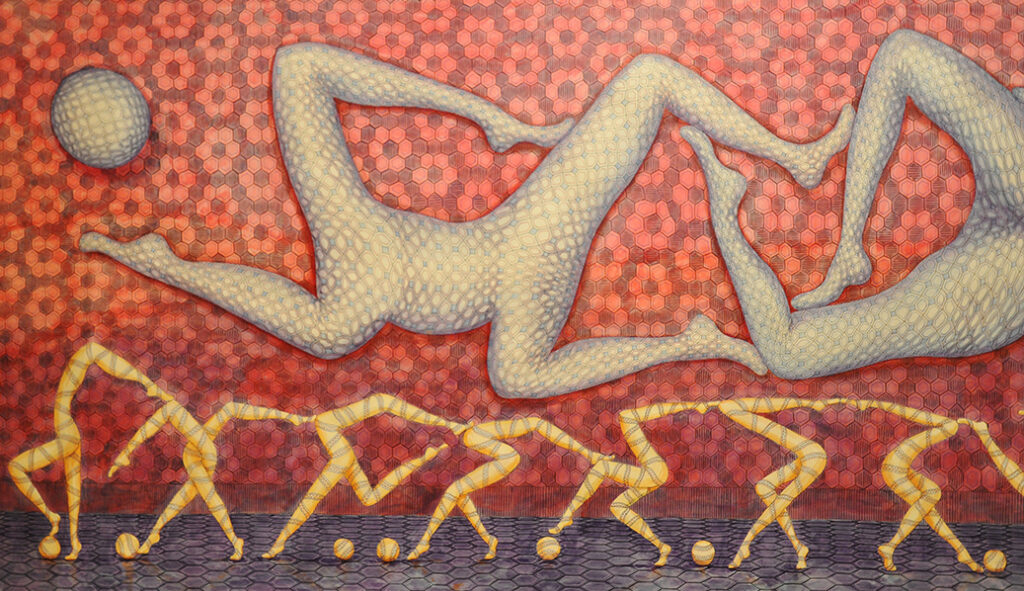
Our image of the world is pre-shaped in education, with all the advantages that entails, and a small disadvantage. We therefore miss the experiences of primitive man who sees in nature that the gods bend the trees out of anger and thus set the air in motion. Because we have explanations and know consequences, we suppress the fear when thunder lets out the wrath of the gods or when lightning sends down the destructive fire. We complain more about this week’s weather than we marvel at the seasons. We seldom realize the wonder of our own body in the midst of that overwhelming everyday nature.

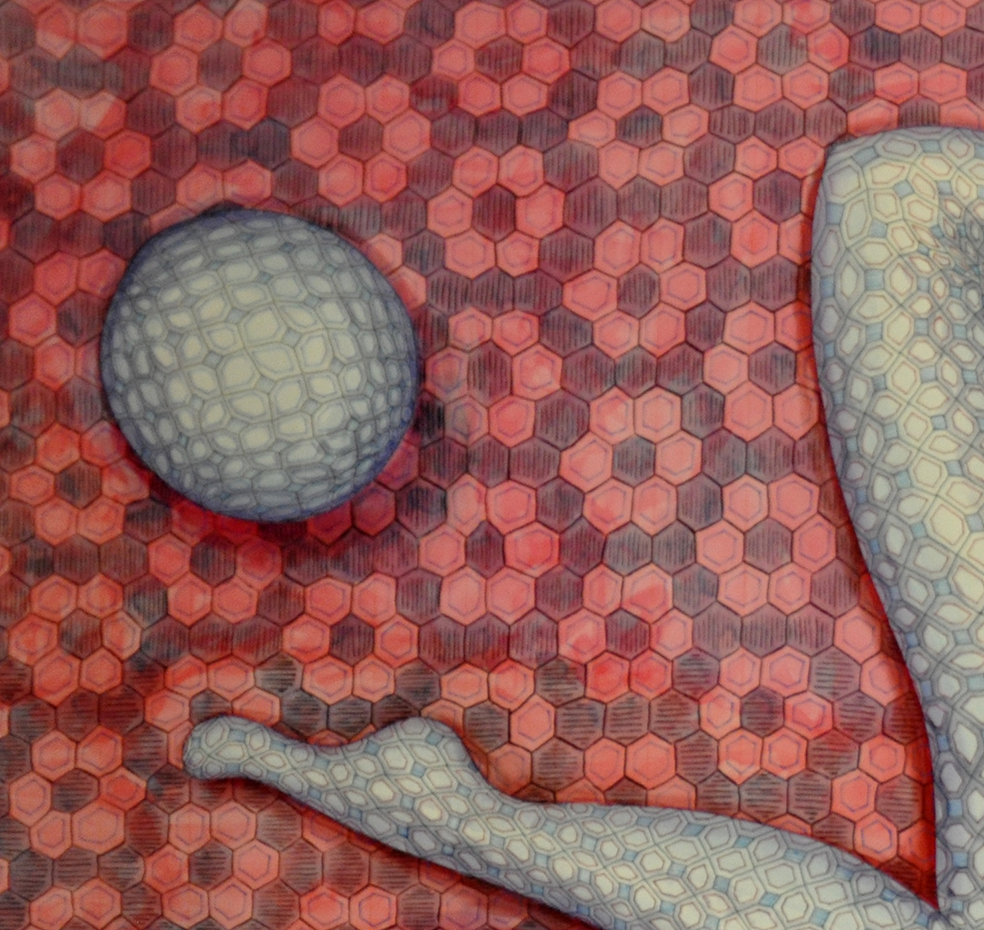
Our perceptions are limited because our knowledge of reality obscures our understanding. Most people don’t think of a cube when they think of a hexagon. The most square object imaginable is a cube, but a projection of a cube in the diagonal plane is a hexagon. A cube has triple axes of rotation through the diagonals. We rarely approach a cube as an object with corners where three faces meet at a point. We usually see squares that share one side. Thus, in our observations, we are stuck in the simplifications we make. We therefore usually see a human being as a shape with legs, arms and a head, and because the face is important for communication, the image of the human being is usually frontal, emphasizing the width of the trunk and not the flexibility. When we think of limbs we always think of hands and feet, even if they are in boots and mittens. If we consider the importance of those ends, hands, feet and head, to be less important, and look at the trunk and limbs from the side, we still see people just as the pointed corners of a cube still represent a cube.